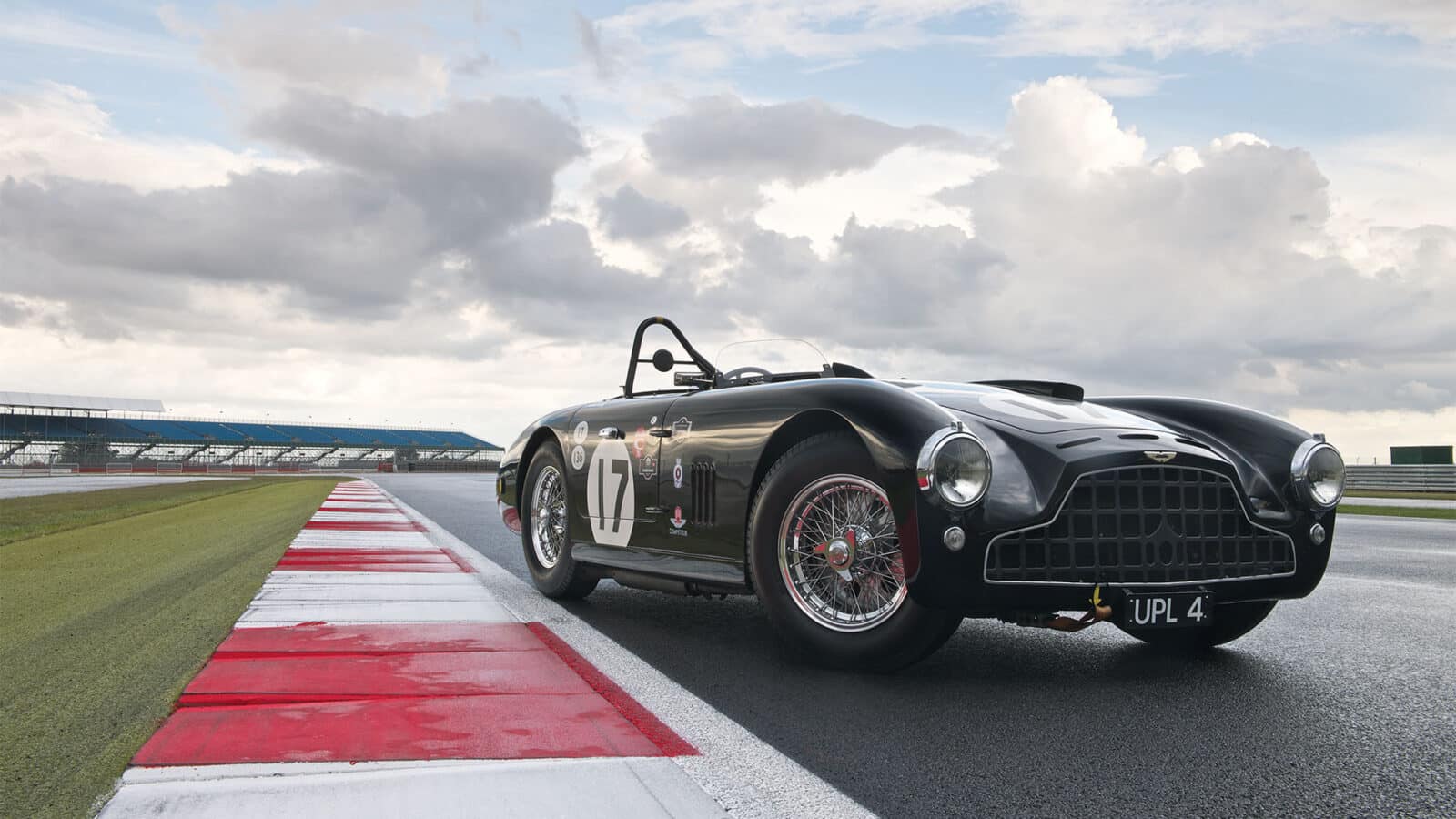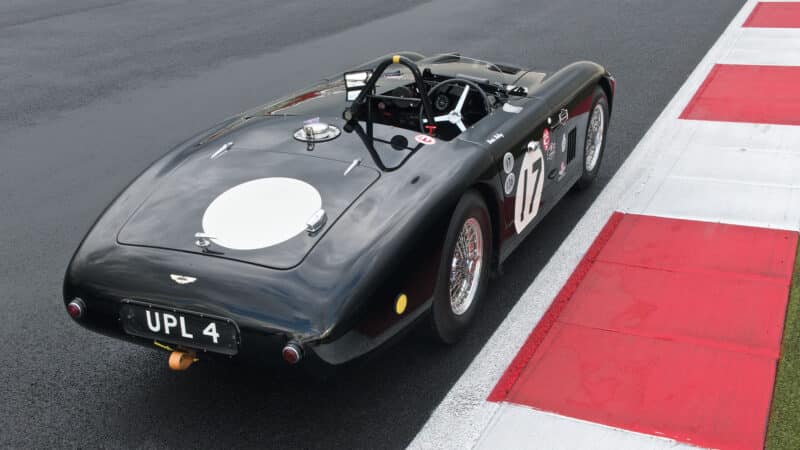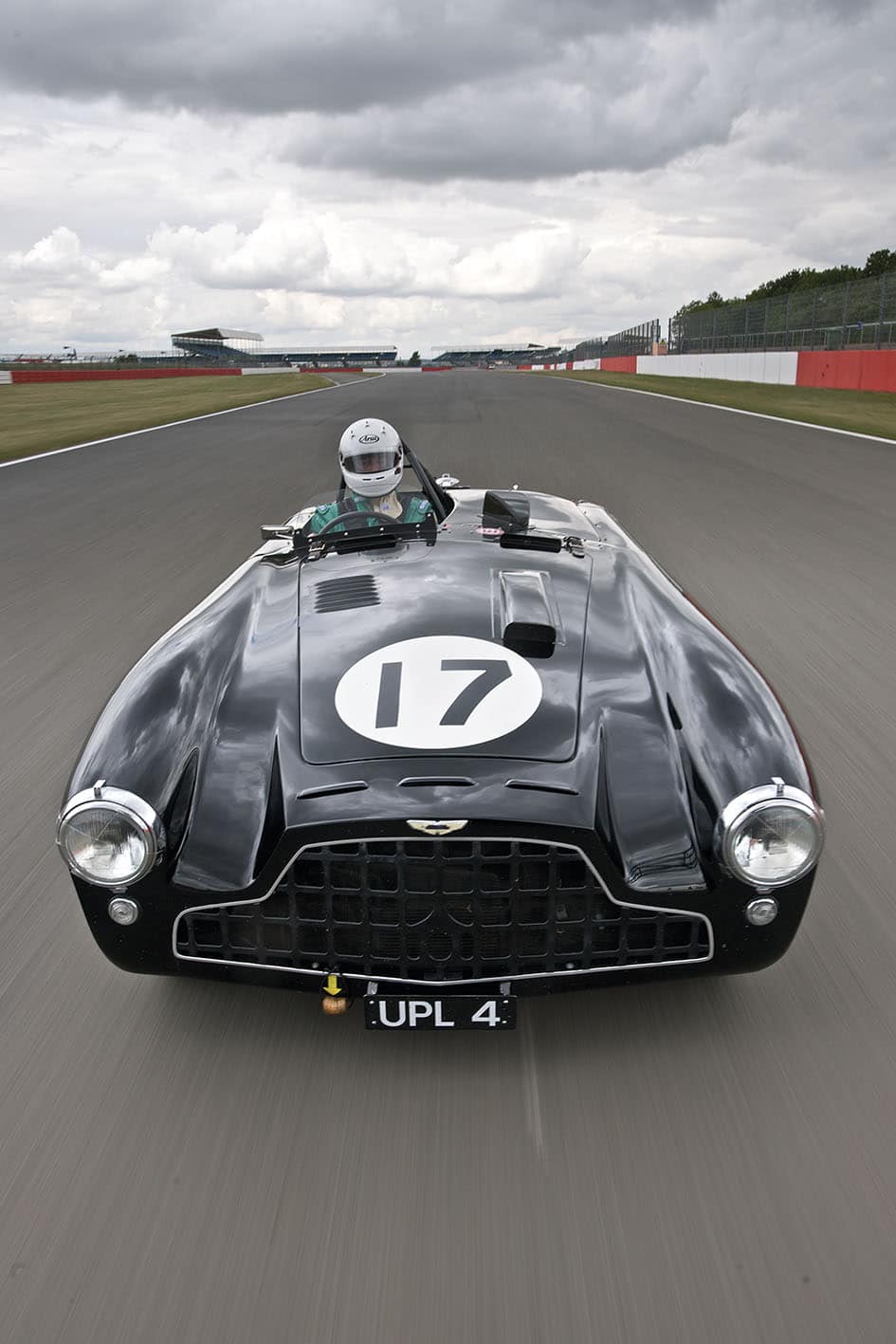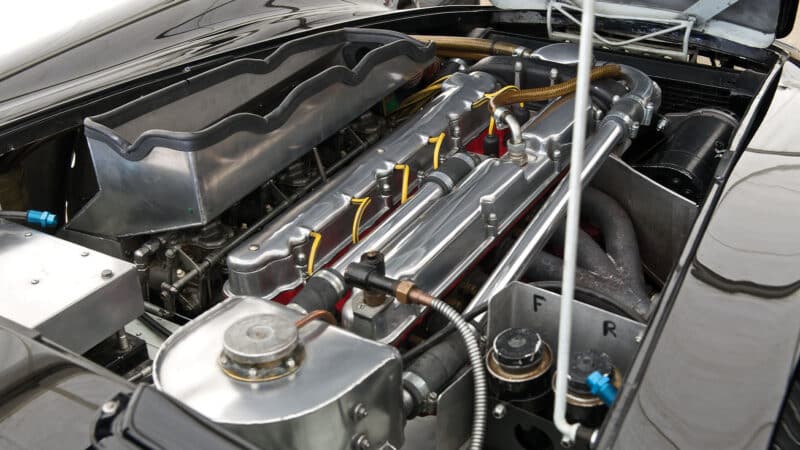Suitably enthused, Brown asked for an all-new, purpose-built racer for Le Mans in 1951 and commissioned Robert Eberan von Eberhorst, the Viennese who had worked with Professor Porsche on the D-type Auto Unions, to design it. Enter the DB3. Or at least that was the idea.
Unsurprisingly, there is more than a whiff of Auto Union about the DB3. Similarly designed around two longitudinal tubular chassis members, it featured trailing arm suspension with a De Dion rear axle located by a Panhard rod, with transverse torsion bar springing fore and aft. Before the day of the disc massive drum brakes were installed, those at the rear located inboard where they would reduce unsprung mass, but also help heat the hypoid drive differential to intolerable levels and introduce Aston to the law of unintended consequences.
Wyer, writing in the late Chris Nixon’s essential Racing with the David Brown Aston Martins, made no secret of the tensions and arguments between the team’s manager and its designer. While Wyer needed a car he could test, Eberan-Eberhorst was a stickler for detail, procedure and design and went about his work, according to Wyer, ‘at a snail’s pace’. By contrast Eberhorst always laid the blame at the lack of funds made available for the project. After the almost unimaginable amount of money thrown at the Auto Unions before the war, the sums available from a struggling Aston Martin must have indeed seemed inadequate.
Wherever the blame lay, it did not affect the essential truth which was that the DB3 was no more going to make it to Le Mans in 1951 than fly to the moon, so reluctantly the DB2s were sent back to France and promptly exceeded their previous best and every expectation: three entries, three finishes, the first three places in the class, and third, fifth and seventh overall. If that’s what a race-prepped road car could do, what would a purpose-built racer achieve?
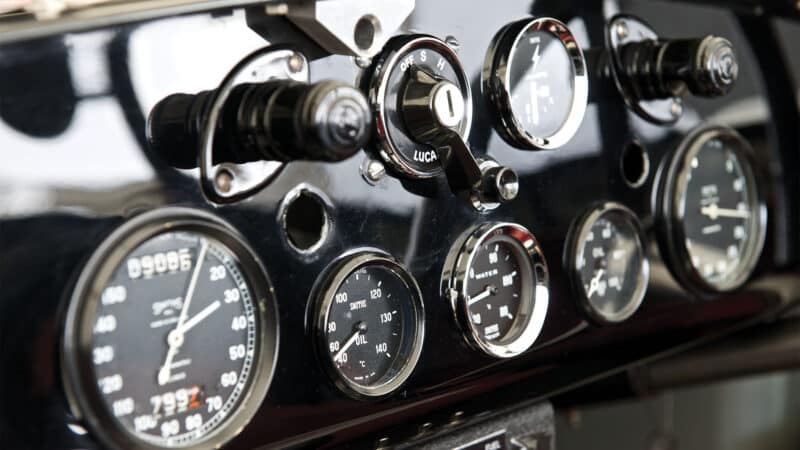
Restored DB3/5 still has tiny Smiths dials
Fall flat on its face, that’s what. Only one DB3 was ready to race at the last event of 1951, the TT in Dundrod, from which Lance Macklin was to retire with engine failure.
Look through the results from 1952 and the letter ‘R’ for ‘retired’ stares right back at you with an uncomfortable frequency. The only DB3 entered for the Empire Trophy retired, as did two out of the three that went to compete in the only Monaco Grand Prix to be held for sports cars. Three went to Le Mans and three failed to finish. Three entered the inaugural Goodwood Nine Hours, only one saw the flag.
A disaster, then? Not quite. Good results may have been few and far between, but they were there: at Silverstone the DB3s came second, third and fourth, wrapping up the top three places in the 3-litre class. And while only one did indeed finish at Goodwood, it was in the position that matters, registering the first-ever major victory for a purpose-built Aston Martin racing car.
